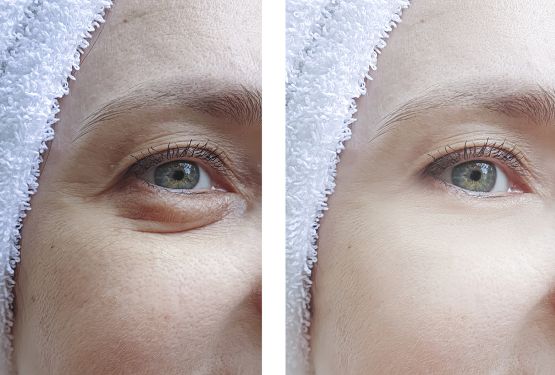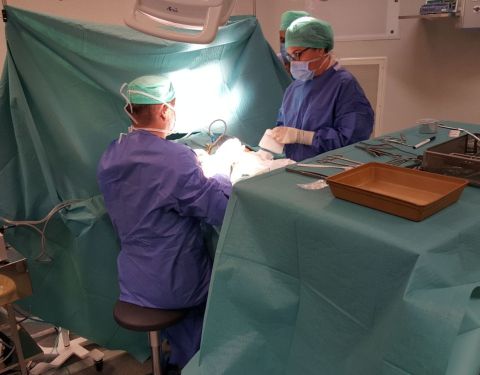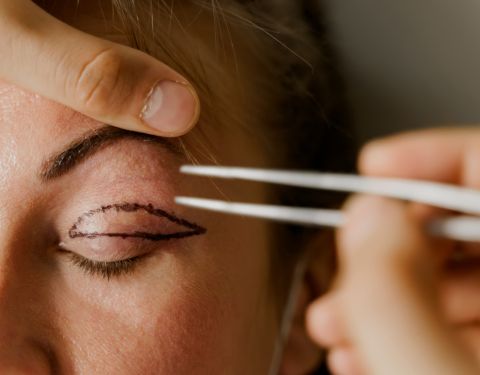Today eyelids plastic surgeries are among the most widespread plastic corrections. Their popularity is connected with the fact that rejuvenation of the eyes gives the strongest rejuvenating effect, allowing them to look several years younger. The fervent, young and speaking look attracts. The laser blepharoplasty helps to keep the freshness of look at any age.
What to prefer: the laser or the scalpel?
The first address to the plastic surgeon is always fear and doubts. The women frightened of horror stories often postpone a visit to the specialist until the last. Among the most widespread fears is a fear of complications, hems, and hematomas.
If you are one of those, then it is worth preferring laser operation as the laser besides being powerful and at the same time, an accurate tool has a number of advantages both for the doctor and for the patient.
Where the laser surpasses the scalpel?
It allows to achieve a considerable reduction of the wound given at the operation, and at the same time considerably reducing the necessary period of restoration. The laser is less traumatic for surrounding tissues, and the cut put during the operation with the laser begins to heal much quicker.
The probability of emergence of hematomas and hypostases after the laser operation is much fewer, as the laser beam, thanks to the high temperature, promotes the cauterization of small vessels.
By choosing the laser, you cannot be afraid of hems as the wound heals without scar that cannot be achieved even with the use of the best scalpel. The laser does not leave any opportunity for the penetration of infection into the blood as walls of a wound “are reliably sealed”.
The laser operation does not demand stationary control, you will be able to be at home in several hours and later go to the specialist only for the control of the restoration process. The effect of the laser operation remains for a long time: in certain cases, the repeated operation was required only in 10 years.
Specialists can operate a patient with carbonic and erbium laser beams. The carbonic laser beam is capable of getting into deep layers of skin, cauterizing vessels that allow not to worry about the possibility of the development of bleeding. However, the same property of the laser beam can become the reason for complications, such as a burn of skin and pain of the patient. The erbium beam allows performing operations without burns as it does not get deep into the tissues. The laser blepharoplasty can be carried out both by the way of surgery and by a non-operating way.
Operational laser blepharoplasty
Nowadays there are 5 types of plastic surgeries on the skin around eyes. The choice of this or that type of operation is based on the complexity of the problem, and on the state of the patient’s skin.
If the reason for the address to the specialist is the hung fold of an upper eyelid, then he offers you the blepharoplasty of upper eyelids that means cutting excess skin and fat.
Bags under eyes, hernias, and swelling are cleaned by means of the laser operation of lower eyelids. In this case, the doctor can do the surgery in several ways:
- having made a cut at an eyelash edge of an eyelid;
- having made a cut inside an eyelid;
- or having carried out correction through a mouth.
The following type of operation is a circular blepharoplasty. It is needed when the patient has problems with both eyelids.
By means of the laser, it is also possible to modify the shape of the eyes. Such a type of operation enjoys special popularity among Asians.
If the patient’s function of a facial nerve is broken, the doctor will surely recommend a canthopexy – the operation promoting correction of shape and expression of eyes.
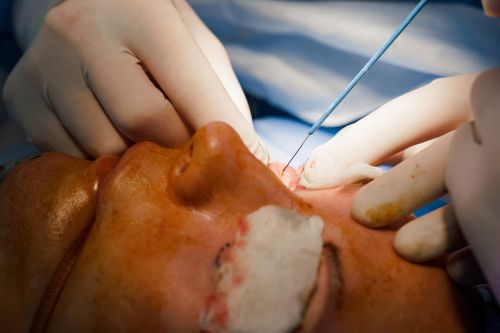
Medical indications to a blepharoplasty
Happens so that the patient comes to the laser correction against his will, and according to the recommendation of other specialists. It happens when he needs to eliminate an overhang of an upper eyelid or to modify the lowered lower eyelid.
Also, you will be recommended to meet the specialist in a blepharoplasty if you suffer from a surplus of skin on eyelids or “fatty hernias”. Deformation of eyelids and asymmetry of the face can also become the indication of the operation.
Operation and restoration
The operation in most cases takes place in outpatient conditions. General anesthesia is applied only in need of additional interventions, more often specialists use local anesthesia, therefore, you should not worry about possible complications from anesthesia.
The operation is performed step by step and includes procedures for the protection of an eye by means of special lenses, anesthesia of the place of the operation, the operation itself and the wound closure. The last one can be made with special glue, and also by surgical tape.
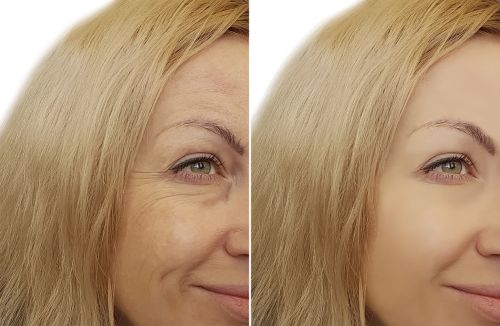
The standard period of restoration after the operation is 14 days. In the first day do not forget about imposing of cold compresses – it will help you to avoid bruises and hypostases. In a week during a control survey, the doctor will remove the imposed seams. In 3 weeks you will notice that hems from a wound disappeared. You will be able to do make-up on your eyes only 10 days after the operation.
Contraindications and possible complications
As well as any procedure, blepharoplasty has contraindications. The specialist will refuse to help the patient with a hyper sensibility to the laser or inflammations in the place of the planned operation. Laser blepharoplasty is not recommended to people:
- with problems of the endocrine system;
- with the increased intraocular pressure;
- having chronic diseases (in the period of an aggravation);
- with HIV infections;
- having tumors of various degrees;
- with violations of coagulability of blood.
After the operation the feeling of dryness of the eyes or constant lacrimation is possible. Such complication is the result of an incorrect work of plaintive glands, it passes maximum in 2 weeks. During the operation, the integrity of vessels is broken that often leads to periorbital hypostasis and hematomas. When dealing with the low-skilled specialist the patient can notice that after the operation he has an asymmetry of eyelids. When choosing the carbonic laser patients to have burns in rare instances.
However, the desire to correct defects of skin around the eyes is not a direct way under the scalpel or the surgeon’s laser. There are also non-operating methods of elimination of defects which are available to those, whose skin is not absolutely in a deplorable state yet.
Small wrinkles, eyelids’ skin color change, the emergence of small hypostases can be corrected by means of the procedure of fractional thermolysis. During the procedure, the erbium laser which is not causing skin burns is used. By means of the laser, the specialist deletes the top layer of skin, intensifying thereby a regeneration process.
The procedure is absolutely safe and does not demand a long restoration. You should only avoid hits of direct sunshine within 14 days. The effect of the procedure usually remains for 2 – 3 years.
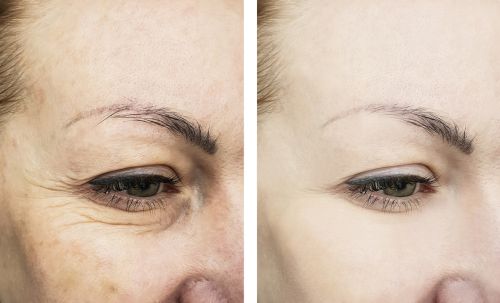
Laser grinding is another option of the elimination of defects of skin around the eyes without operation. The carbonic laser is used there by means of which the doctor evaporates the top layer of skin. The method allows achieving a more lasting effect for 5 sessions, than during fractional thermolysis.




